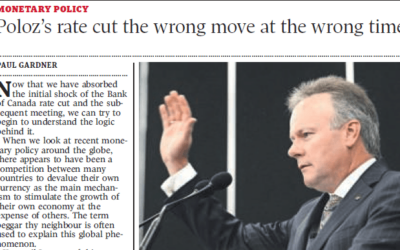The September jobs report released last week served as an important milestone for the U.S. economy. We have now had 72 consecutive months where the U.S. economy has added jobs. In this time, more than 14 million jobs have been added – the equivalent of 200,000 jobs a month for six years. By all accounts, this suggests that the U.S. economy should be firing on all cylinders.
bryden teich
Poloz’s Rate Cut the Wrong Move at the Wrong Time
Now that we have absorbed the initial shock of the Bank of Canada rate cut and the subsequent meeting, we can try to begin to understand the logic behind it.


